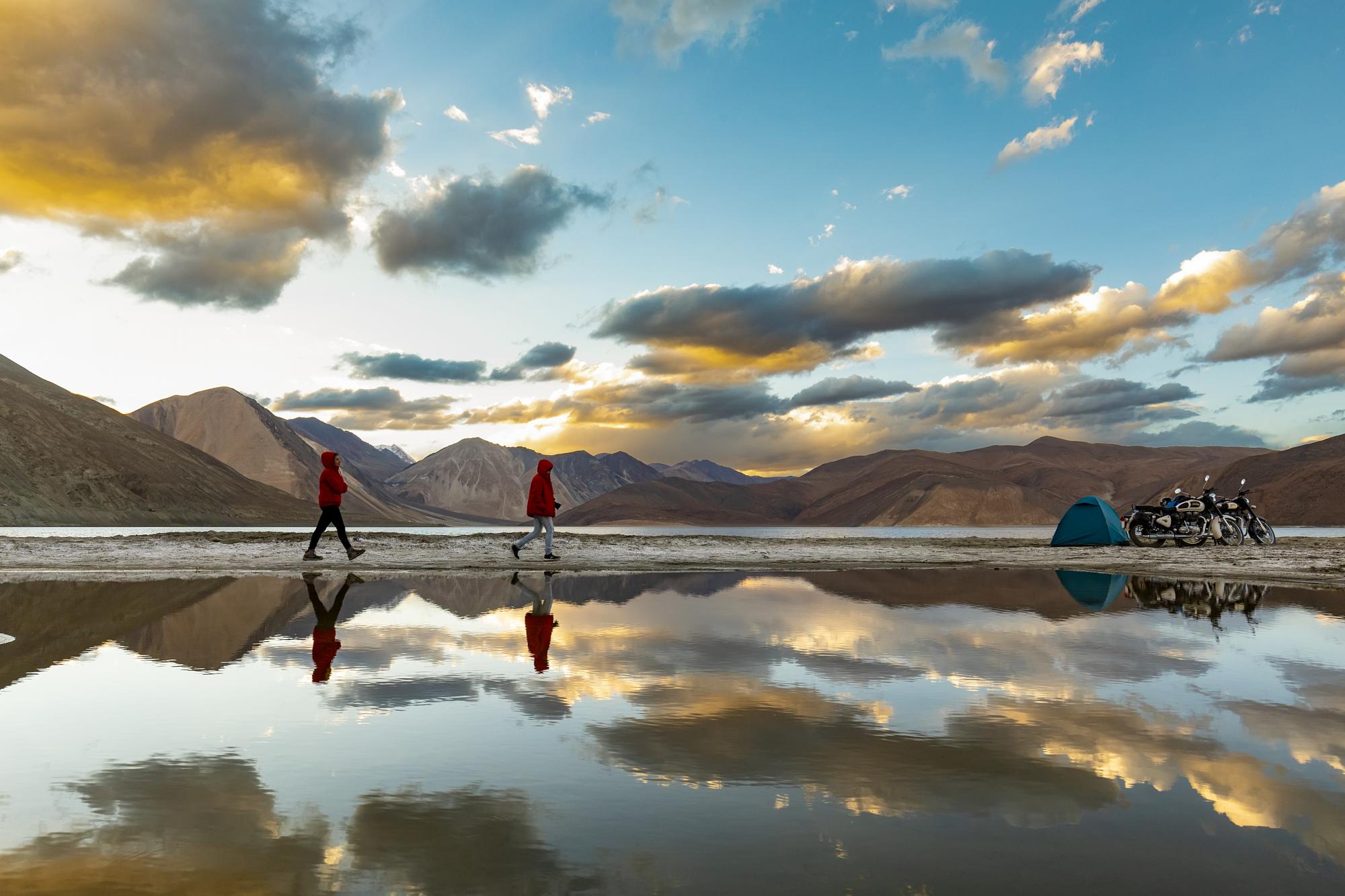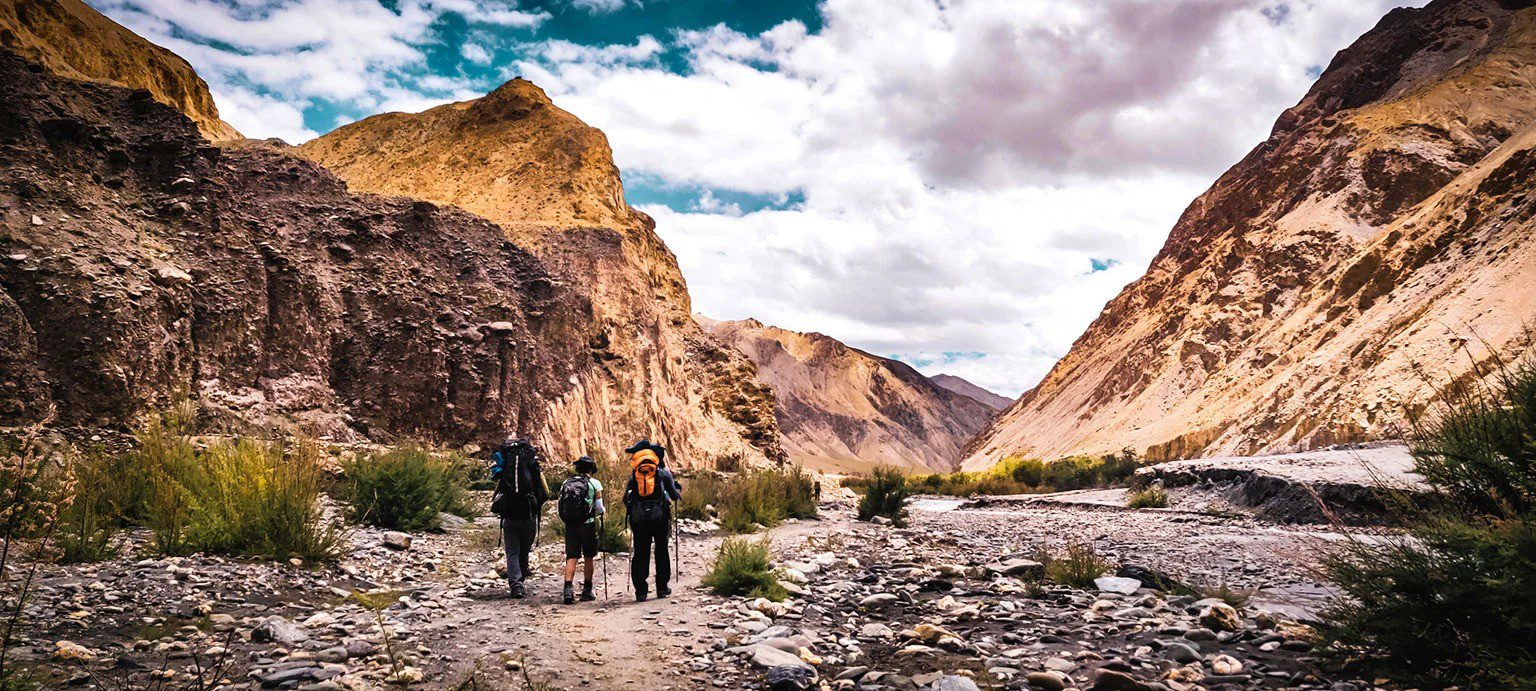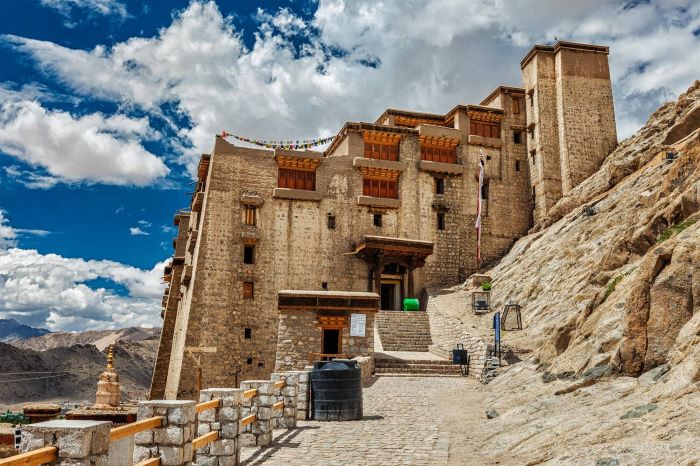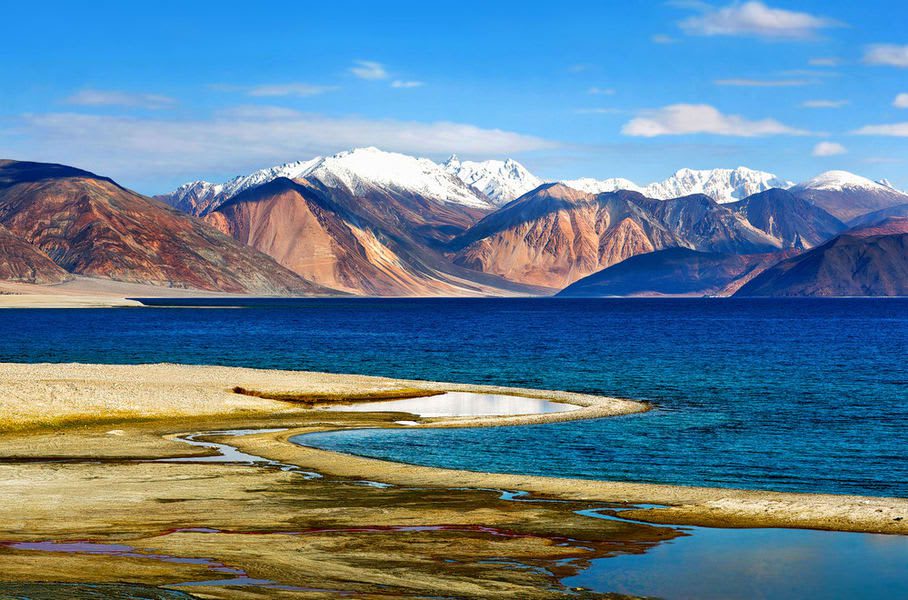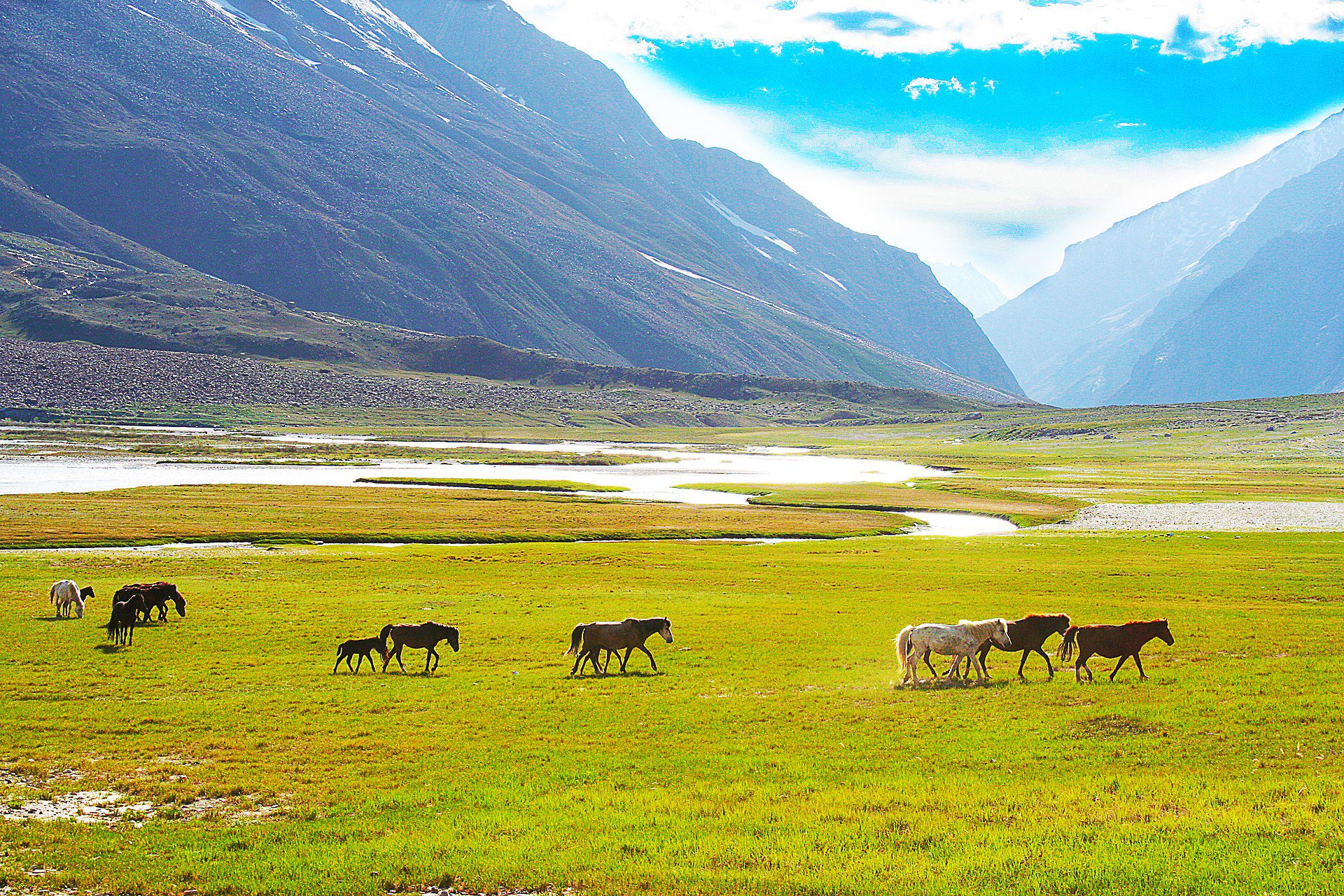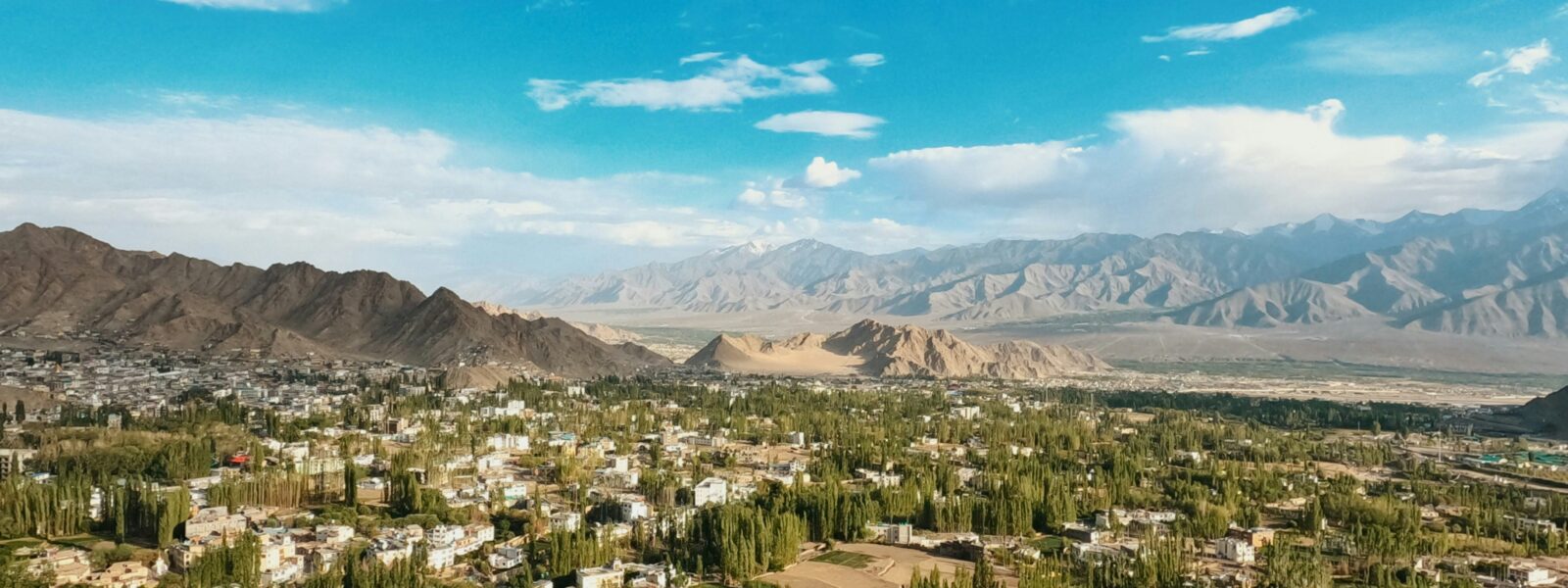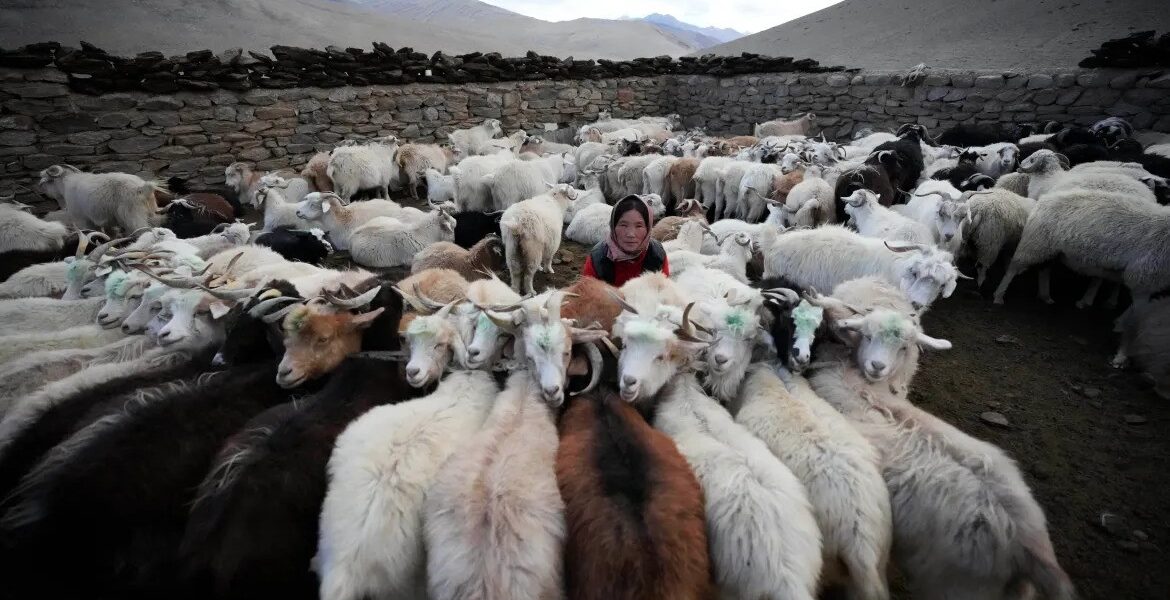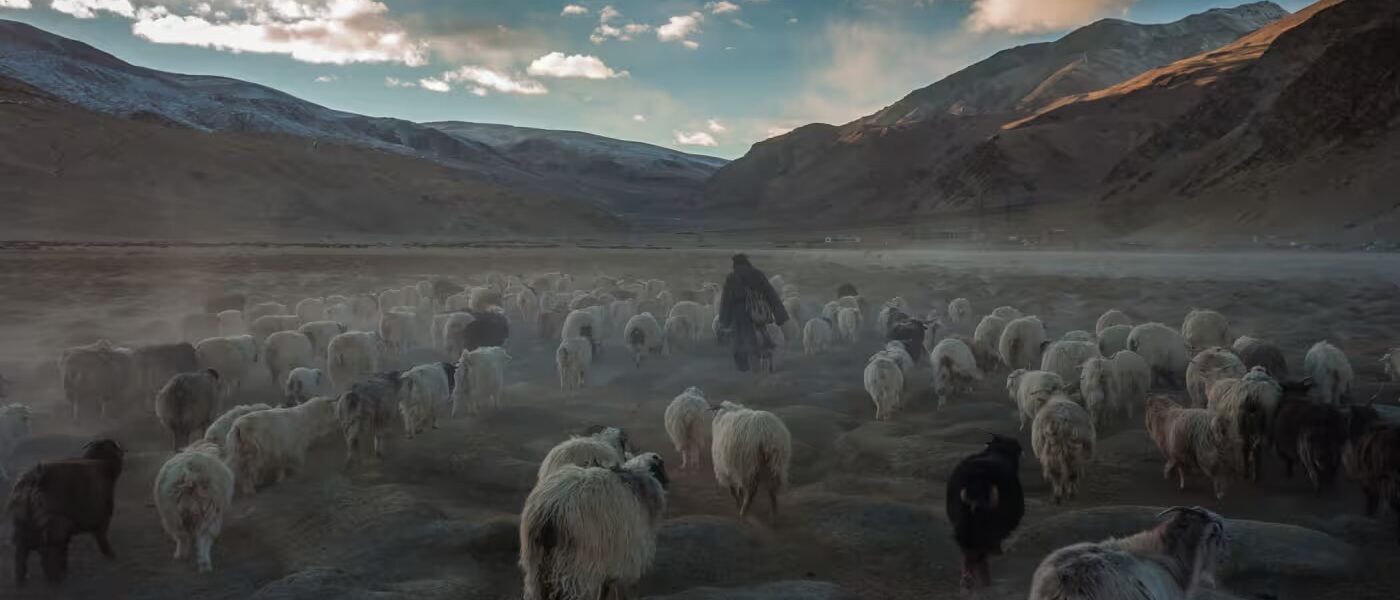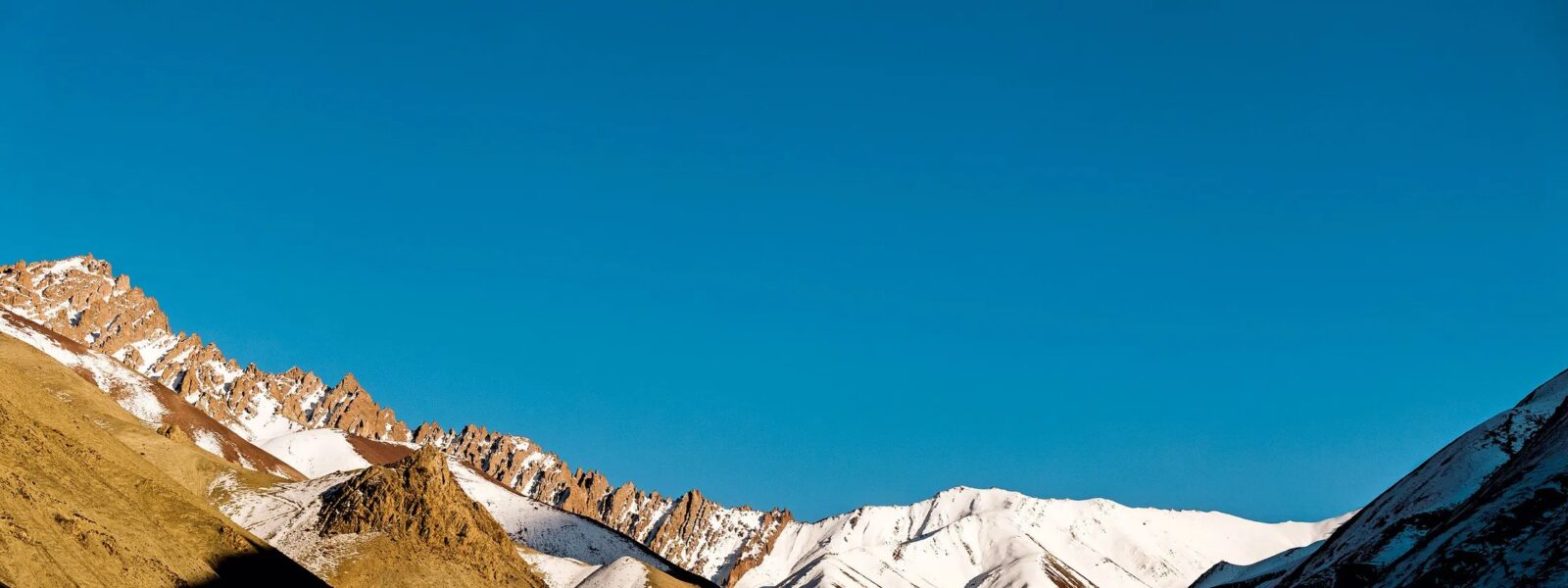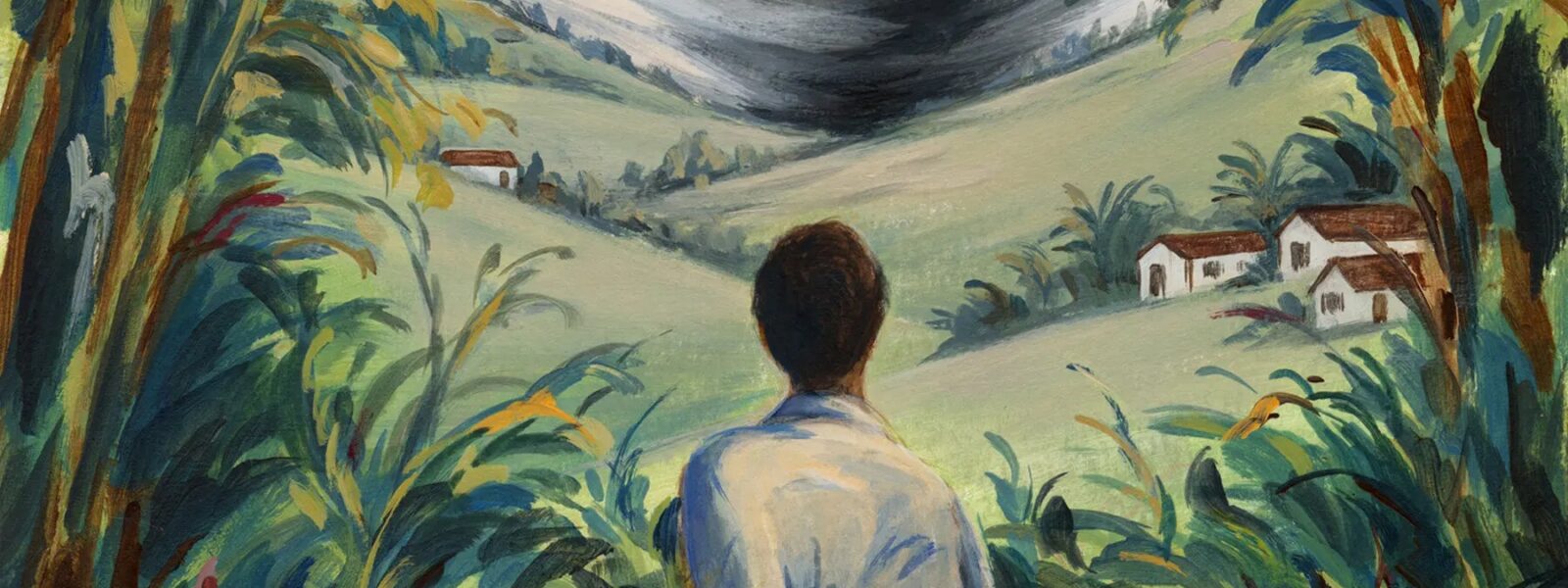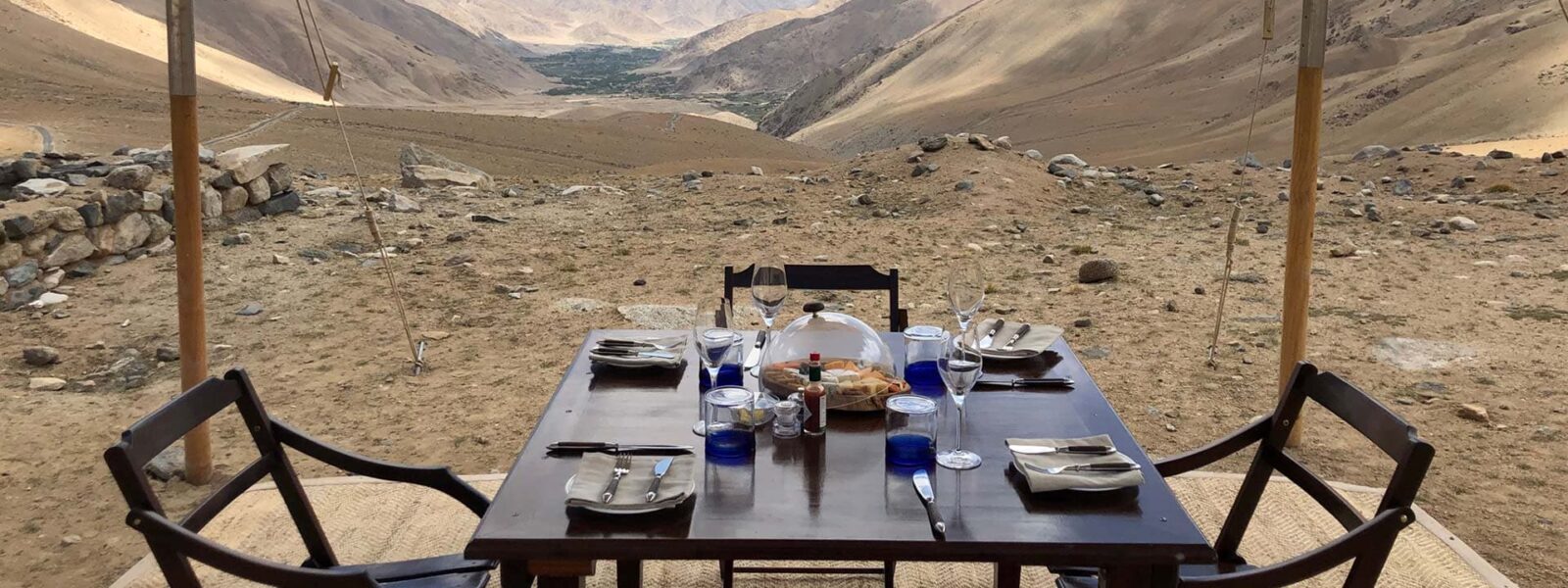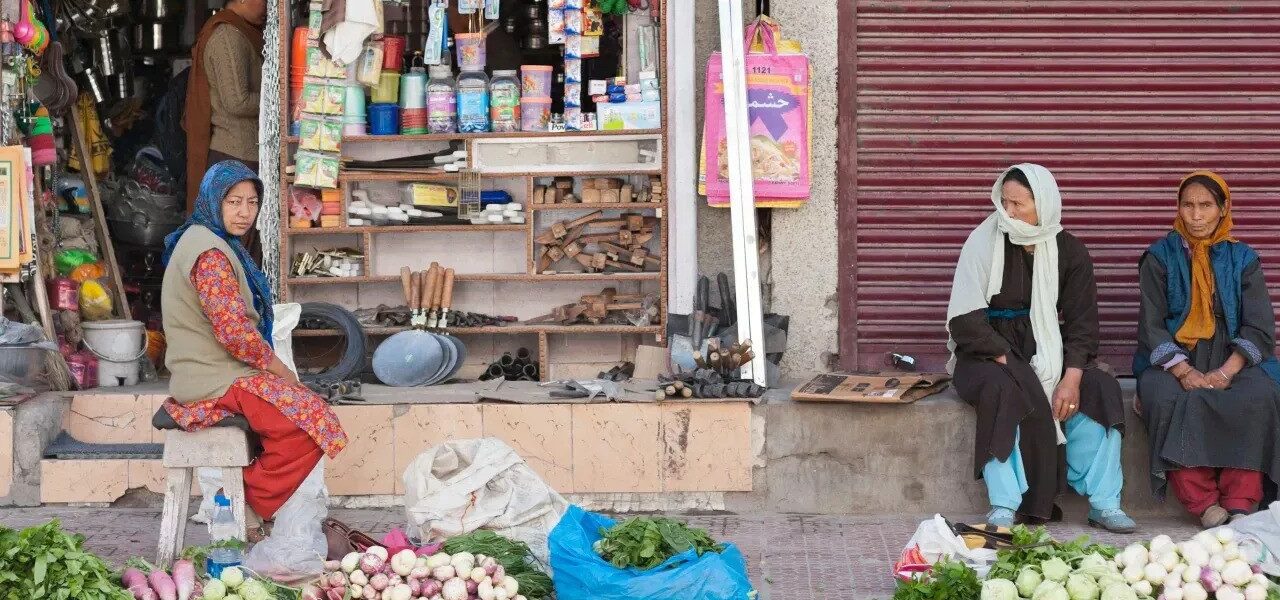Ladakh for First-Time Travelers: If you’ve been dreaming of visiting Ladakh and this is your first time planning a trip, you’re in for an unforgettable adventure. Located in the northernmost region of India, Ladakh is renowned for its breathtaking landscapes, ancient monasteries, and thrilling road trips that challenge even the most seasoned travelers. Whether you’re a nature enthusiast, a cultural explorer, or an adrenaline junkie, Ladakh offers something for everyone. However, traveling to this high-altitude destination requires preparation, especially for first-time visitors.
In this comprehensive guide, we’ll cover everything you need to know before visiting Ladakh for the first time—from how to get there, what to pack, and how to avoid altitude sickness, to the must-see attractions and local etiquette.
1. Introduction to Ladakh: Why It’s a Must-Visit for First-Time Travelers
1.1 What Makes Ladakh Special?
Ladakh, often referred to as the “Land of High Passes,” is one of the most stunning regions in the Indian Himalayas. It boasts rugged mountains, serene lakes, and vast, barren landscapes that offer a visual treat like no other. The distinct Buddhist culture and traditions of Ladakh are a huge draw for travelers, offering a peaceful, spiritual experience amidst dramatic scenery. For first-time visitors, Ladakh feels like stepping into another world.
1.2 Ladakh’s Growing Popularity Among First-Time Visitors
Ladakh’s rising popularity can be attributed to its unparalleled beauty and the increasing accessibility of its high-altitude regions. Popular with motorcycle riders, road trippers, and adventure travelers, the region is now attracting many first-time tourists looking for a unique experience. Whether it’s camping by Pangong Lake, exploring Nubra Valley, or trekking in Markha Valley, Ladakh offers a perfect mix of adventure and tranquility.

2. Best Time to Visit Ladakh
2.1 Ideal Seasons for a Ladakh Trip
The best time to visit Ladakh largely depends on your preferences. The most popular season is from May to September, when the weather is pleasant, the snow has melted, and the roads are accessible. During this time, the Leh Manali Highway and the Srinagar-Leh Highway are open, offering some of the best road trip experiences in the world.
| Season |
Weather |
Pros |
Cons |
| Summer (May-Sept) |
Pleasant (10°C to 25°C) |
Best for road trips, sightseeing, and festivals |
Crowded and higher prices |
| Monsoon (Jul-Aug) |
Moderate (10°C to 20°C) |
Lush landscapes |
Risk of landslides, road closures |
| Winter (Oct-Feb) |
Cold (-5°C to -30°C) |
Snow-covered scenery, fewer tourists |
Harsh cold, many areas inaccessible |
2.2 Avoiding Monsoon and Winter Extremes
While summer is the best season for first-time travelers, the monsoon months (July and August) can bring unpredictable weather and landslides, making road travel risky. The winter months are perfect for those looking for a quiet, snow-covered Ladakh, but many roads and attractions are closed due to heavy snowfall. For a first-time traveler, it’s best to avoid winter unless you’re specifically planning a Chadar Trek adventure.
3. How to Reach Ladakh: Travel Options for First-Timers
3.1 Traveling to Ladakh by Road
For many, driving to Ladakh is the ultimate adventure. There are two primary routes:
- The Leh-Manali Highway, a thrilling yet challenging journey across some of the highest mountain passes in the world.
- The Srinagar-Leh Highway, which is slightly easier and offers scenic views of Kargil and Zoji La Pass.
Both routes offer stunning landscapes but require careful planning due to their high altitude and changing weather conditions.

3.2 Flying to Leh Ladakh: What You Need to Know
If you prefer a faster, more comfortable option, you can fly directly to Leh’s Kushok Bakula Rimpochee Airport. This is the easiest way to reach Ladakh, especially for first-time travelers. However, upon arrival, it’s essential to acclimatize for at least 24 hours due to the sudden altitude change. Many travelers experience altitude sickness because Leh sits at an altitude of about 11,500 feet.
4. Essential Permits and Documents for Ladakh
4.1 Inner Line Permit: How to Get It and Why You Need It
First-time travelers need to be aware that certain regions in Ladakh, such as Pangong Lake, Nubra Valley, and Tso Moriri, require an Inner Line Permit. This permit is mandatory for both Indian and foreign tourists and can be obtained online or in person at the Deputy Commissioner’s office in Leh.
| Region |
Permit Required |
| Pangong Lake |
Yes |
| Nubra Valley |
Yes |
| Tso Moriri |
Yes |
| Hanle |
Yes |
4.2 Travel Insurance and Other Documents
It’s highly recommended to have travel insurance that covers high-altitude activities. Make sure to carry your ID proof, photocopies of your permits, and additional passport-sized photographs.
5. Acclimatization and Altitude Sickness in Ladakh
5.1 Understanding Altitude Sickness
At high altitudes, there’s less oxygen, which can cause altitude sickness (Acute Mountain Sickness or AMS). Symptoms include headaches, dizziness, nausea, and breathlessness. Ladakh’s high-altitude passes and towns like Leh are particularly challenging for first-time visitors unfamiliar with these conditions.
5.2 How to Acclimatize Safely
To avoid altitude sickness, it’s essential to acclimatize properly. Spend your first 24-48 hours in Leh resting and drinking plenty of water. Avoid physical exertion and consume a diet rich in carbohydrates to aid oxygen absorption.
Pro tip: Consider carrying Diamox tablets after consulting your doctor, as they help in preventing altitude sickness.

6. What to Pack for a Ladakh Trip
6.1 Packing Essentials for Different Seasons
Packing for Ladakh depends on the season, but there are some essentials you’ll need year-round:
- Warm Layers: Even in summer, the temperatures can drop significantly at night.
- Trekking Shoes: Waterproof and durable, these are crucial for exploring Ladakh’s rugged terrain.
- Sunscreen and Sunglasses: At high altitudes, the sun is intense, so protection is a must.
- First Aid Kit: Include altitude sickness medicine, bandages, and any personal medications.
6.2 Other Travel Gear and Gadgets
Don’t forget to bring a good camera to capture the incredible landscapes, as well as portable chargers for your gadgets, especially if you’re heading to remote areas where electricity may be scarce.
7. Ladakh’s Top Attractions for First-Time Visitors
7.1 Must-Visit Monasteries and Temples
Ladakh is known for its ancient Buddhist monasteries that dot the landscapes. Some of the must-visit ones include:
- Hemis Monastery: The largest and wealthiest in Ladakh.
- Thiksey Monastery: Famous for its 12-story architecture.
- Diskit Monastery: Known for its iconic statue of Maitreya Buddha.
7.2 Iconic Lakes and Valleys
Pangong Lake and Nubra Valley are two of Ladakh’s most iconic destinations. The shimmering blue waters of Pangong stretch across India and China, while Nubra Valley offers the rare experience of Bactrian camel rides in the desert-like Hunder region.

8. Budgeting and Costs: What to Expect
8.1 Estimating Travel Costs for a Ladakh Trip
Traveling to Ladakh can be as luxurious or budget-friendly as you want. Here’s a rough cost estimate for a 7-day trip for a first-time traveler:
| Expense Category |
Estimated Cost (INR) |
| Accommodation (per day) |
1000 – 5000 |
| Meals (per day) |
300 – 1000 |
| Transport (bike rental) |
1000 – 2000 per day |
| Inner Line Permit |
500 – 600 |
8.2 Saving Money: Budget-Friendly Options
To travel on a budget, consider staying in guesthouses or homestays in Leh, traveling in a group to split costs, and eating at local restaurants instead of tourist hotspots.
9. Safety Tips for Traveling to Ladakh
9.1 Navigating Road Conditions and Weather
Ladakh’s roads, especially the Leh Manali Highway, are notorious for being challenging due to steep climbs, hairpin bends, and narrow pathways. Always ensure your vehicle is well-maintained, carry spare fuel, and check weather updates before embarking on a road trip.
9.2 General Safety and Health Tips
- Stay hydrated and acclimatize properly to avoid AMS.
- Carry enough cash as ATMs are limited in remote areas.
- Travel with adequate travel insurance that covers high-altitude health risks.
Conclusion: Final Travel Tips for First-Time Visitors
Visiting Ladakh for the first time is an extraordinary experience that combines natural beauty, cultural exploration, and adventure travel. Remember to plan carefully, acclimatize, and respect local customs for a safe and memorable journey. Whether you’re marveling at the surreal landscapes of Pangong Lake or trekking through the rugged mountains, Ladakh is sure to leave a lasting impression on you.

FAQs: First-Time Travel to Ladakh
Q: Is Ladakh safe for first-time travelers?
A: Yes, Ladakh is generally safe for first-time travelers, but it’s important to acclimatize properly and take precautions against altitude sickness.
Q: How many days are enough for a Ladakh trip?
A: A 7 to 10-day trip is ideal for first-time visitors to Ladakh to explore major attractions like Leh, Pangong Lake, and Nubra Valley.
Q: What should I pack for my Ladakh trip?
A: Essentials include warm layers, trekking shoes, sunscreen, sunglasses, and a first aid kit. Packing depends on the season but always be prepared for cold nights.
Q: Do I need a permit to visit Ladakh?
A: Yes, for specific areas like Pangong Lake and Nubra Valley, an Inner Line Permit is required, which can be obtained online or in Leh.
Q: What is the best time to visit Ladakh?
A: The best time to visit is from May to September when the weather is pleasant and roads are open. Avoid monsoon and winter months if you are a first-time visitor.
Q: How do I avoid altitude sickness in Ladakh?
A: To prevent altitude sickness, rest for the first 24-48 hours, stay hydrated, and avoid strenuous activities. Consider taking Diamox as a preventive measure after consulting your doctor.
Ladakh for First-Time Travelers
Ladakh for First-Time Travelers | The journey through Ladakh mirrors the very essence of unraveling unknown horizons, as its dramatic landscapes and unique cultural identity awaken the deepest sense of wonder and exploration. Ladakh for First-Time Travelersdelves into this realm where inner peace intertwines with the wild, untouched beauty of Ladakh. From the snow-capped peaks to the serene monasteries, every step in Ladakh is a step toward self-discovery. The mountains, ancient paths, and unspoken mysteries stretch before travelers, offering a meditative experience where each encounter feels both effortless and transformative. Whether it’s trekking across remote valleys or sitting quietly beside a sacred lake, Ladakh invites those who seek a deeper connection to the natural and spiritual world.

The Ladakh for First-Time Travelers’s Ladakh for First-Time Travelers
The monasteries of Ladakh stand as living monuments to the region’s profound spiritual heritage. With origins dating back over a thousand years, these ancient structures are both places of worship and repositories of art, culture, and wisdom. Hemis Monastery, one of the largest in Ladakh, is renowned for its annual festival, featuring colorful mask dances performed by monks. The history of these monasteries reflects Ladakh’s role as a crossroads between India, Tibet, and Central Asia, where religious and cultural influences have intertwined over the centuries.
The Tibetan Buddhist influence is especially evident in the architecture and daily life of the monks. Prayer wheels, intricate murals, and the soft hum of chants fill the air as visitors explore the monastery grounds. Each monastery, from the remote Lamayuru to the awe-inspiring Thiksey, offers a window into the spiritual heart of Ladakh. These centers of meditation, learning, and community life continue to thrive, preserving traditions that have shaped Ladakh for generations.
Why Visit Ladakh for Ladakh for First-Time Travelers?
Ladakh is a destination that transcends mere travel. It offers a journey that touches both the outer and inner landscapes, making it a perfect setting for those who seek to unravel their own unknown horizons. The region’s breathtaking scenery—from towering mountain ranges to hidden valleys—provides not just an escape but a space for contemplation and growth. Ladakh’s culture, deeply rooted in Buddhist practices, invites visitors to reflect on their own lives and the world around them.
Ladakh’s people, known for their warmth and hospitality, add to the richness of the experience. Villages like Sumda Chun and the legendary Nubra Valley introduce travelers to a way of life that is intricately connected to nature and spirituality. Staying in local homestays allows for immersive experiences where one can learn about traditional Ladakhi customs, share meals made from local produce, and participate in community rituals.

Beyond its natural beauty, Ladakh offers a unique opportunity to explore oneself. The vastness of the region’s plateaus and the clarity of its skies seem to mirror the vastness of the human spirit. Whether it’s standing atop a mountain pass at 18,000 feet or meditating in a centuries-old monastery, Ladakh helps unravel the unknown horizons within each traveler.
Finding the Best Ladakh for First-Time Travelers in Ladakh
Finding the best places in Ladakh to experience “Ladakh for First-Time Travelers” involves venturing off the beaten path. Ladakh’s lesser-known treks, such as those leading to secluded monasteries or high-altitude lakes, offer unparalleled opportunities for solitude and reflection. The Markha Valley trek, for instance, takes travelers through verdant valleys, ancient villages, and high-altitude passes, allowing for both physical and spiritual exploration.
Ladakh’s iconic lakes, including Pangong Tso and Tso Moriri, are ideal spots for quiet contemplation. Their still waters reflect the sky, creating a mesmerizing landscape that feels timeless and infinite. Sitting beside these lakes, especially at dawn or dusk, brings an overwhelming sense of peace and connection with nature.

For those interested in Ladakh’s spiritual heritage, exploring monasteries such as Alchi, Phyang, or Diskit can be a transformative experience. These sites are not just places of worship but also centers of art, philosophy, and wisdom. Visiting these monasteries, with their ancient murals and intricate statues, offers insight into Ladakh’s rich cultural tapestry.
Ladakh’s Atmosphere and Ladakh for First-Time Travelers
Ladakh’s atmosphere is unlike any other place on Earth. The stark contrasts between the rugged mountains and the serene, tranquil monasteries create an environment that feels both raw and sacred. The traditional decor in Ladakhi homes and religious sites reflects this balance, with mud-brick houses adorned with prayer flags and colorful thangkas (Buddhist paintings) that add warmth and spiritual meaning to the space.

The interiors of Ladakhi homes, often simple and functional, are filled with symbols of devotion. Small shrines dedicated to Buddhist deities are common, and the air is often fragrant with incense. The use of earthy materials, like stone and wood, along with brightly colored textiles, creates an inviting and peaceful space, perfect for relaxation and reflection.
Traditional Ladakhi Cuisine
Traditional Ladakhi cuisine is an integral part of the region’s identity, offering a unique blend of flavors that reflect its harsh climate and remote location. Hearty, warming dishes such as thukpa (noodle soup) and momos (dumplings) provide the sustenance needed to endure Ladakh’s cold temperatures. Skyu, a thick stew made with root vegetables and barley, is another staple of the Ladakhi diet, designed to nourish both body and spirit.

Drinks like butter tea, made with yak butter and salt, are a must-try for anyone visiting Ladakh. This rich, savory drink is not only warming but also hydrating, making it essential for those venturing into the high-altitude regions of Ladakh. Chang, a local barley beer, is often enjoyed during festivals and community gatherings, adding a sense of joy and camaraderie to any occasion.
Live Cultural Ladakh for First-Time Travelers in Ladakh
Ladakh is home to a vibrant cultural scene, with festivals and live performances held throughout the year. The Hemis Festival, which celebrates the birth of Guru Padmasambhava, is one of the largest and most famous events in the region. Monks dressed in elaborate costumes perform cham dances, which depict the triumph of good over evil. The energy of the festival, with its bright colors, rhythmic music, and elaborate rituals, draws visitors from around the world.
Other local festivals, such as the Losar (New Year) and Ladakh Festival, provide visitors with the chance to witness traditional dance, music, and crafts that have been passed down through generations. These events are more than just entertainment; they are a celebration of Ladakh’s rich cultural heritage and its deep connection to the spiritual world.
Trekking and Outdoor Activities Ladakh for First-Time Travelers
Ladakh is a trekker’s paradise, offering some of the most stunning and challenging routes in the world. From the famous Ladakh for First-Time Travelers, which follows the frozen Zanskar River, to lesser-known routes like the Sham Valley or Nubra Valley treks, Ladakh’s landscape offers endless possibilities for adventure and discovery. The high-altitude passes, such as Khardung La and Chang La, offer breathtaking views of snow-capped peaks and sprawling valleys.

Wildlife enthusiasts will also find Ladakh for First-Time Travelers to be a haven for rare species such as the snow leopard, Himalayan blue sheep, and the Tibetan wild ass. Winter expeditions to spot the elusive snow leopard in the Hemis National Park are gaining popularity among wildlife photographers and conservationists alike.
The Importance of Preserving Ladakh’s Ladakh for First-Time Travelers
Ladakh’s rich cultural and environmental Ladakh for First-Time Travelers is under increasing threat from climate change and mass tourism. Preserving this unique region requires careful attention to sustainable tourism practices. Choosing eco-friendly accommodations, supporting local businesses, and participating in community-led conservation efforts are just a few ways that visitors can contribute to the preservation of Ladakh’s natural and cultural heritage.
Ladakh’s people have a long history of living in harmony with their environment, practicing sustainable agriculture, and maintaining a deep spiritual connection to the land. Visitors are encouraged to follow the same principles, leaving no trace and respecting the fragile ecosystems that make Ladakh so special.
Etiquette and Tips for Visiting Ladakh for First-Time Travelers
Before visiting Ladakh, it’s essential to understand and respect the region’s customs and traditions. As a deeply spiritual place, Ladakh requires visitors to dress modestly, especially when visiting monasteries or attending religious ceremonies. Always ask for permission before taking photographs inside monasteries or of local people.
Medical Ladakh for First-Time Travelers
Spa trail Ladakh for First-Time Travelers
Ladakh for First-Time Travelers

When Ladakh for First-Time Travelers, remember to stay on designated paths to avoid damaging fragile ecosystems. Tipping is appreciated but not expected in most settings, and it’s important to carry cash, as many remote areas do not accept credit cards. Lastly, be mindful of altitude sickness and take the necessary precautions when traveling to higher elevations.
Conclusion: Enjoying Ladakh for First-Time Travelers in Ladakh
Ladakh is a place where the physical and spiritual worlds converge, offering travelers a journey unlike any other. Whether you’re trekking across high-altitude deserts, exploring ancient monasteries, or simply sitting in quiet reflection by a mountain lake, Ladakh invites you to unravel your own unknown horizons. By respecting the region’s traditions and practicing sustainable tourism, you help ensure that Ladakh’s beauty and cultural richness will be preserved for future generations to explore and enjoy.
